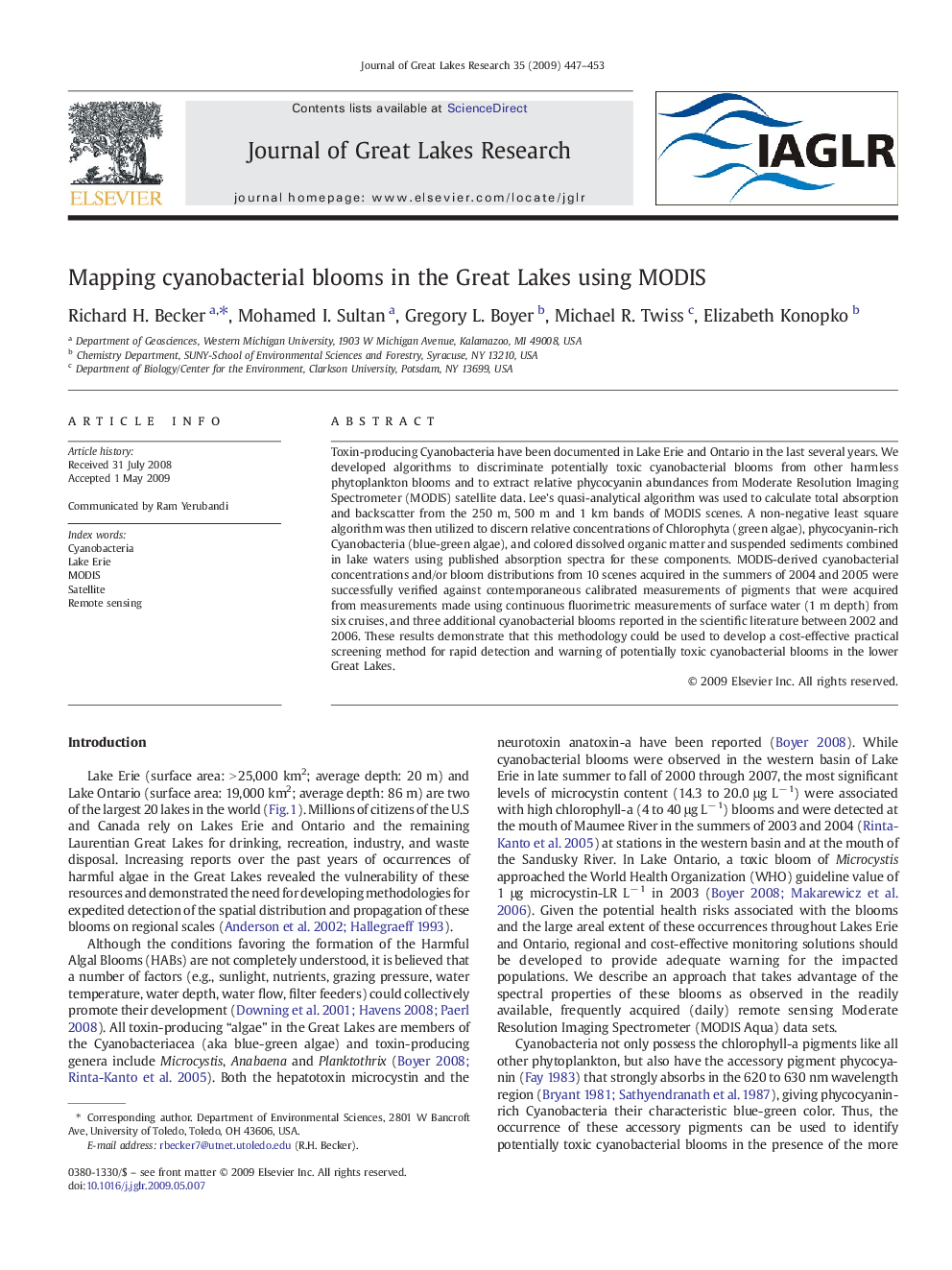| Article ID | Journal | Published Year | Pages | File Type |
|---|---|---|---|---|
| 4399296 | Journal of Great Lakes Research | 2009 | 7 Pages |
Abstract
Toxin-producing Cyanobacteria have been documented in Lake Erie and Ontario in the last several years. We developed algorithms to discriminate potentially toxic cyanobacterial blooms from other harmless phytoplankton blooms and to extract relative phycocyanin abundances from Moderate Resolution Imaging Spectrometer (MODIS) satellite data. Lee's quasi-analytical algorithm was used to calculate total absorption and backscatter from the 250Â m, 500Â m and 1Â km bands of MODIS scenes. A non-negative least square algorithm was then utilized to discern relative concentrations of Chlorophyta (green algae), phycocyanin-rich Cyanobacteria (blue-green algae), and colored dissolved organic matter and suspended sediments combined in lake waters using published absorption spectra for these components. MODIS-derived cyanobacterial concentrations and/or bloom distributions from 10 scenes acquired in the summers of 2004 and 2005 were successfully verified against contemporaneous calibrated measurements of pigments that were acquired from measurements made using continuous fluorimetric measurements of surface water (1Â m depth) from six cruises, and three additional cyanobacterial blooms reported in the scientific literature between 2002 and 2006. These results demonstrate that this methodology could be used to develop a cost-effective practical screening method for rapid detection and warning of potentially toxic cyanobacterial blooms in the lower Great Lakes.
Related Topics
Physical Sciences and Engineering
Earth and Planetary Sciences
Earth and Planetary Sciences (General)
Authors
Richard H. Becker, Mohamed I. Sultan, Gregory L. Boyer, Michael R. Twiss, Elizabeth Konopko,
